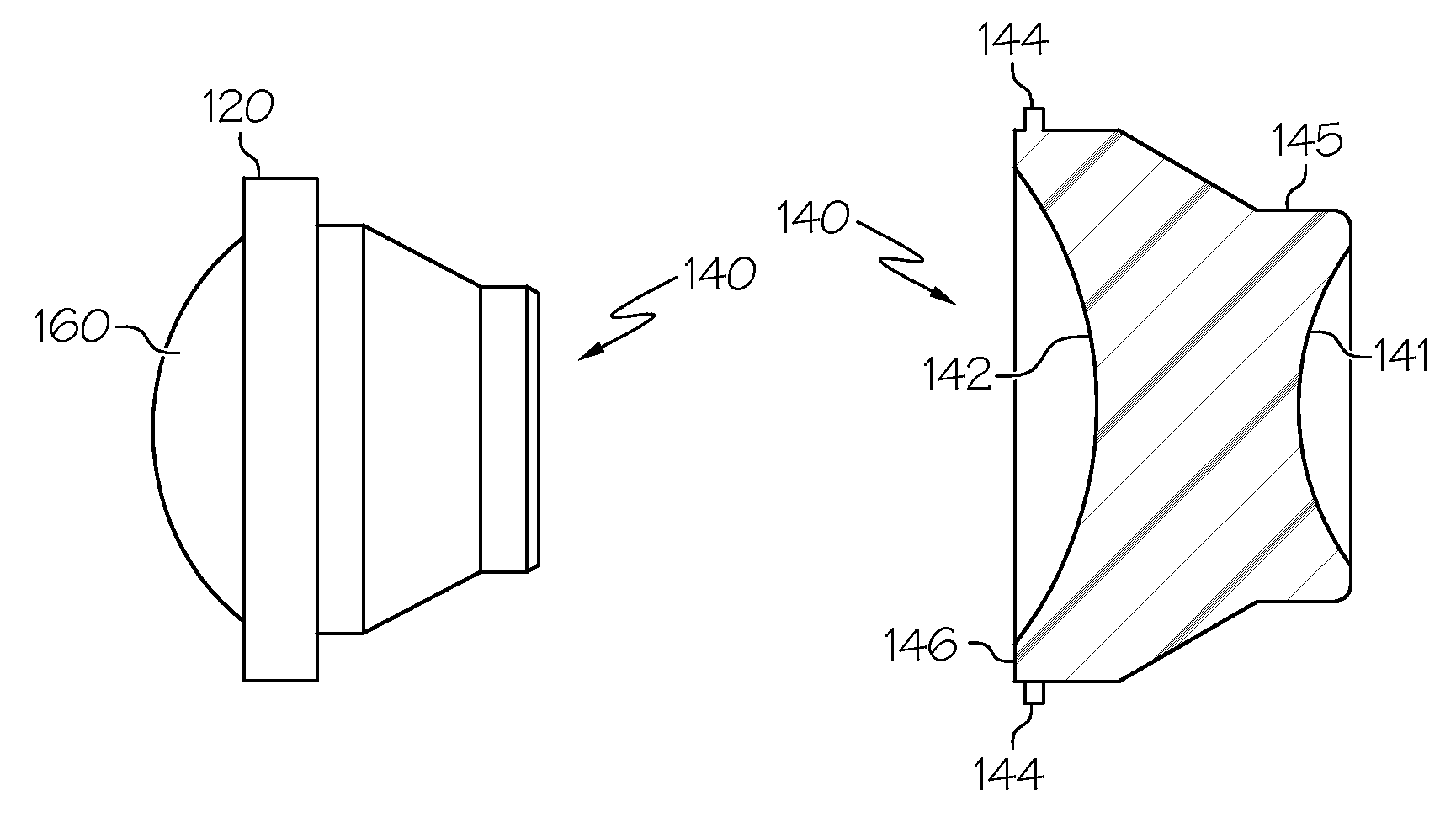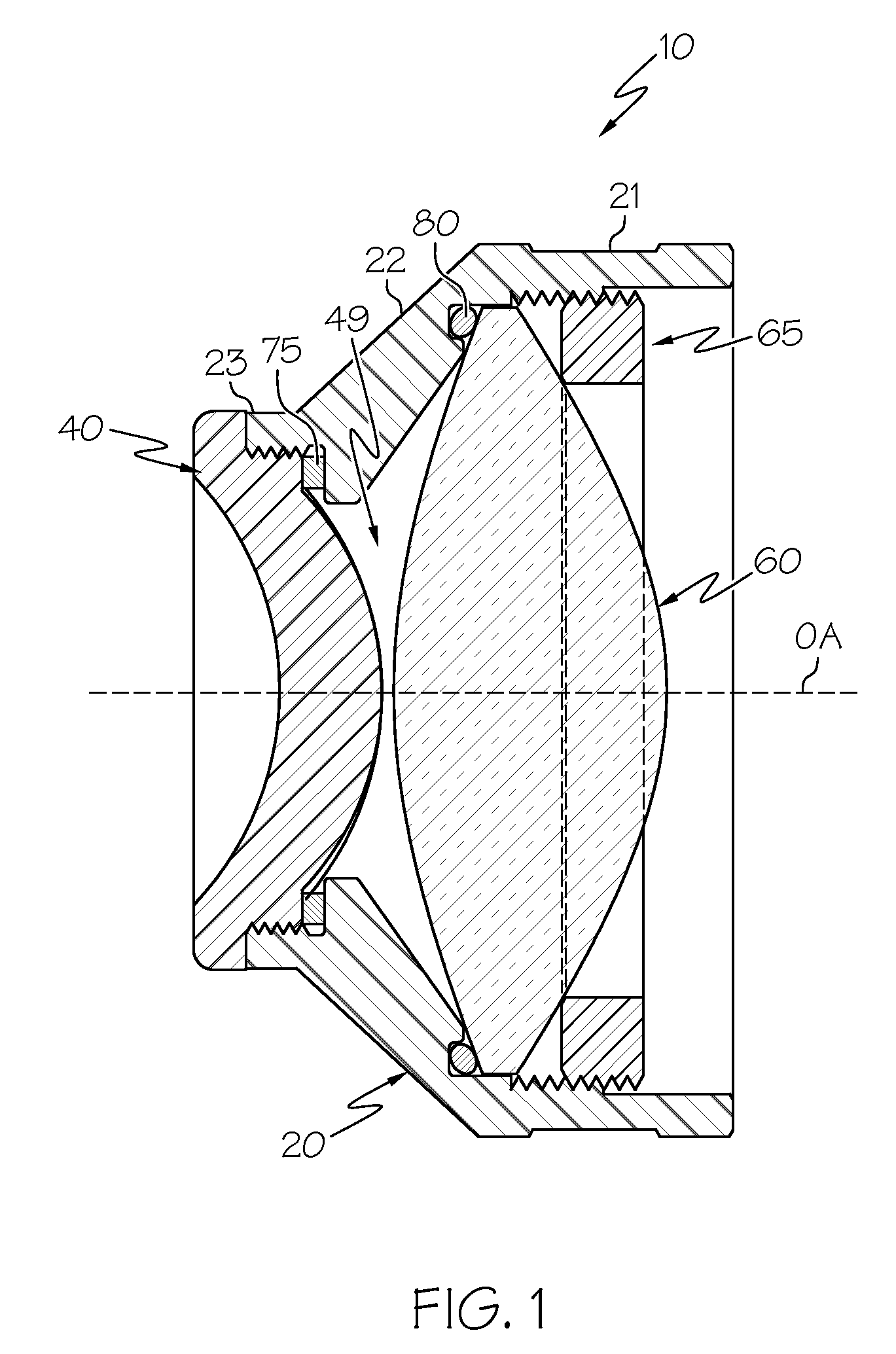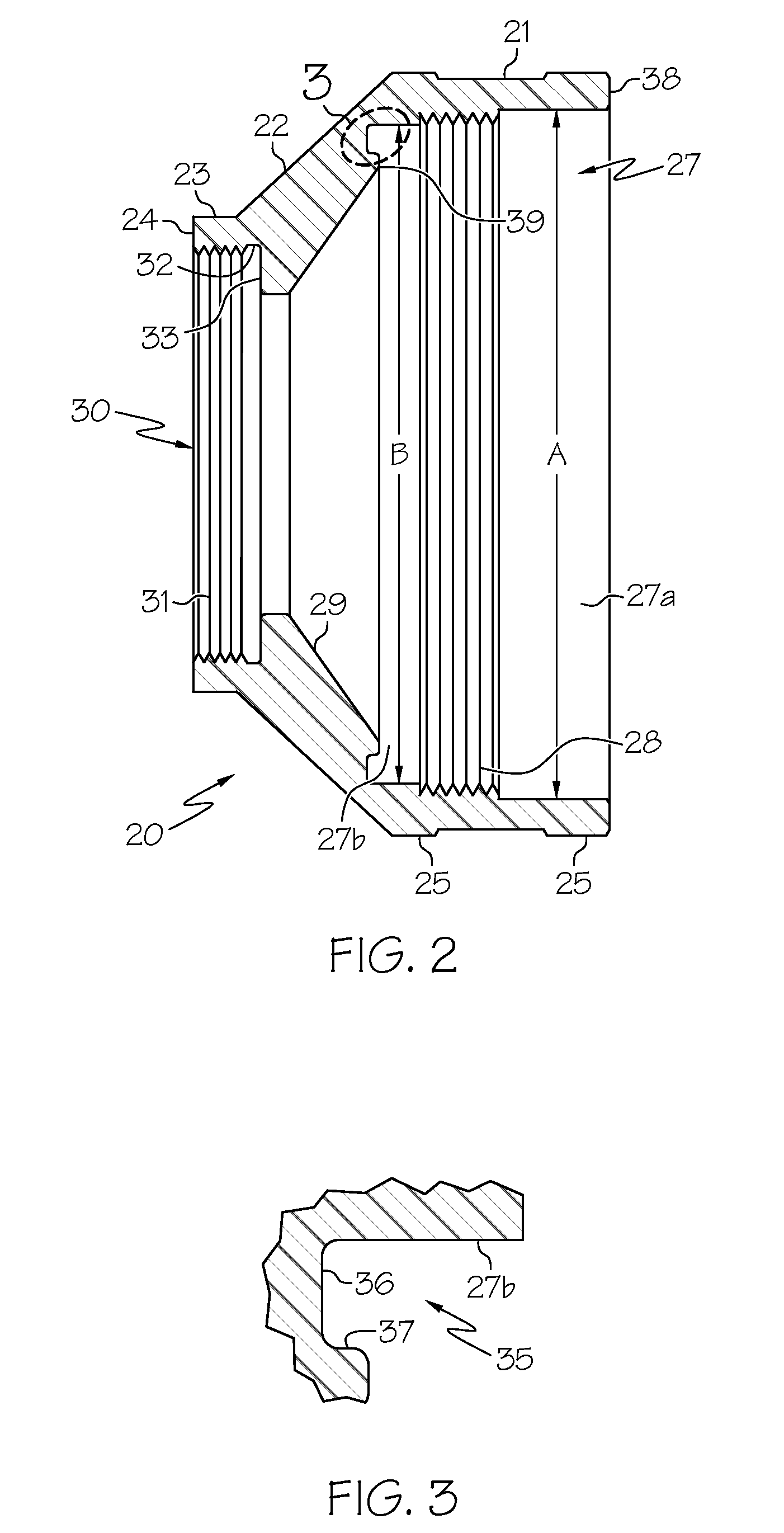Sterilizable ophthalmoscopy lens system
- Summary
- Abstract
- Description
- Claims
- Application Information
AI Technical Summary
Benefits of technology
Problems solved by technology
Method used
Image
Examples
Embodiment Construction
[0035]The present invention provides an ophthalmoscopy lens system, such as a lens system suitable for use during vitreoretinal surgery, which may be easily and effectively sterilized. In particular, lens systems according to the present invention may be sterilized (or disinfected) by immersion in chemical sterilants such as glutaraldehyde, hydrogen peroxide or bleach (e.g., sodium hypochlorite). These lens systems may also be sterilized by steam sterilization (such as by use of an autoclave). By proper selection of the materials used to manufacture the various components of the lens system, the lens system can be sterilized without significant damage to the components (particularly the individual lens elements) or degradation of the optical characteristics of the lens system. Some embodiments of the present invention are sealed such that the lens need not be disassembled for sterilization purposes, while other embodiments permit the lens to be quickly and easily disassembled prior ...
PUM
 Login to view more
Login to view more Abstract
Description
Claims
Application Information
 Login to view more
Login to view more - R&D Engineer
- R&D Manager
- IP Professional
- Industry Leading Data Capabilities
- Powerful AI technology
- Patent DNA Extraction
Browse by: Latest US Patents, China's latest patents, Technical Efficacy Thesaurus, Application Domain, Technology Topic.
© 2024 PatSnap. All rights reserved.Legal|Privacy policy|Modern Slavery Act Transparency Statement|Sitemap



